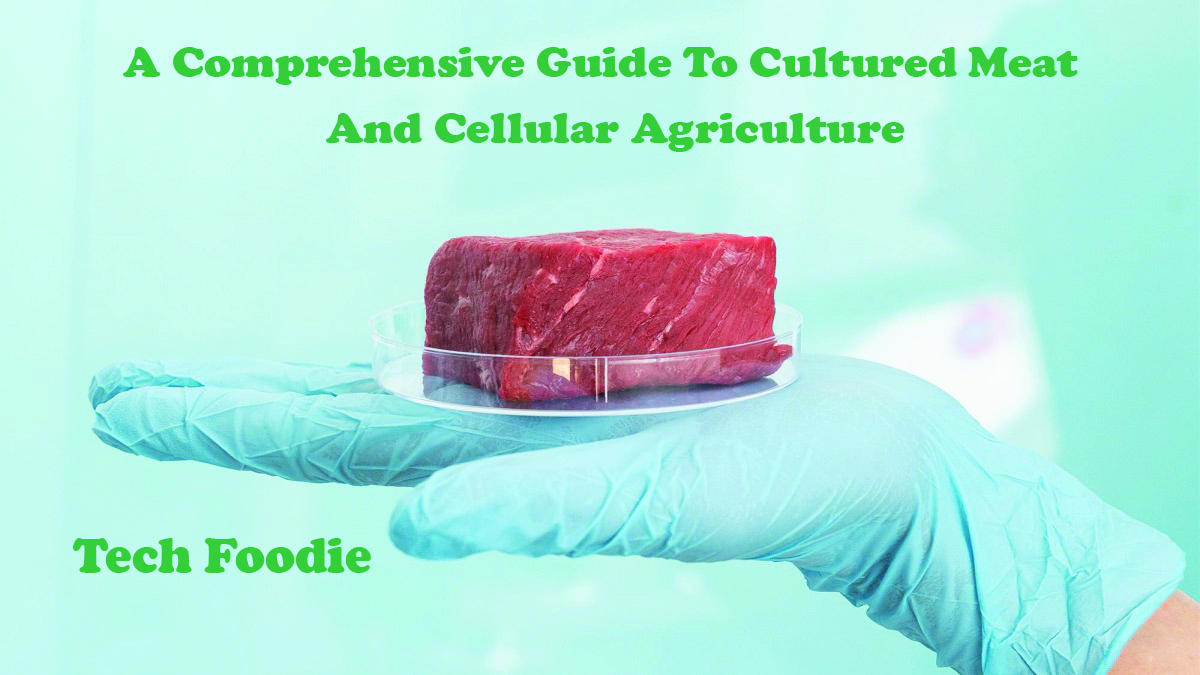A Comprehensive Guide To Cultured Meat And Cellular Agriculture
There has been an increase in interest in non-traditional methods of producing meat in recent years. Cultured Meat And Cellular Agriculture, often known as lab-grown meat, is one such strategy that has attracted a lot of interest.
The idea of making meat directly from cells in a lab has caught the attention of scientists, businesspeople, and consumers alike because of worries over environmental sustainability, animal welfare, and global food security. In this essay, we will explore the technique, advantages, and potential drawbacks of this cutting-edge technology as we delve into the fascinating realm of cultured meat and cellular agriculture.
The Concept of Cultured Meat - Overview:

Cultured meat, also known as lab-grown meat, is a revolutionary technology that involves producing meat products through cell culture rather than traditional animal agriculture. It offers a potential solution to various challenges associated with conventional meat production, including land use, greenhouse gas emissions, and the welfare of animals.
By growing food and meat cells in a controlled laboratory environment, scientists can replicate the taste, texture, and nutritional composition of conventional meat, offering a sustainable and ethical alternative.
The Science Behind Cultured Meat And Cellular Agriculture
Cellular agriculture is the field that has made cultured meat possible. In order to promote cell division and tissue creation, a tiny sample of animal cells must be removed, usually from muscle tissue, and given the right nutrients, growth hormones, and scaffolds.
The cells are grown in bioreactors using tissue engineering techniques, where they multiply and differentiate into muscle fibers, fat cells, and connective tissues. Real meat that can be gathered and prepared for eating is the end product.
Cultured Meat Production Process
The production of cultured meat involves several key steps. Firstly, a small biopsy is taken from a living animal, which is then isolated and treated to extract the desired cells. These cells are then placed in a nutrient-rich culture medium and exposed to growth factors that stimulate cell division. The cells are cultivated on scaffolds that mimic the natural extracellular matrix, allowing them to grow into three-dimensional structures.
As the cells continue to multiply and differentiate, they form muscle tissue, fat, and other components of meat. Once the desired texture is achieved, the cultured meat can be harvested, processed, and prepared for consumption.
Addressing Environmental Concerns
One of the primary motivations behind the development of cultured meat is its potential to mitigate environmental concerns associated with conventional meat production. Livestock farming is a significant contributor to greenhouse gas emissions, deforestation, and water pollution. By transitioning to cultured meat, these environmental impacts can be significantly reduced. Cultured meat production requires fewer resources, such as land and water, compared to traditional animal agriculture.
It has the potential to minimize deforestation caused by expanding livestock grazing areas and conserve water by using advanced cultivation techniques. Additionally, cultured meat production emits fewer greenhouse gases, as it eliminates the methane emissions associated with animal digestion and the carbon emissions from land use changes. With the adoption of cultured meat, we can make substantial progress toward a more sustainable and environmentally friendly food system.
Animal Welfare and Ethical Considerations
The ethical treatment of animals has become an important concern for many consumers. Factory farming practices often involve cramped and stressful conditions for animals, leading to poor welfare standards. Cultured meat provides a humane alternative by eliminating the need for animal slaughter.
By growing meat directly from cells, we can bypass the ethical dilemmas associated with traditional meat production. Cultured meat can offer the same taste and nutritional benefits as conventionally produced meat, without the harm inflicted on animals. It presents an opportunity to revolutionize the food industry by aligning our dietary choices with compassion and respect for animal welfare.
Food Security and Sustainable Agriculture
As the global population continues to grow, ensuring food security becomes increasingly challenging. Cultured meat has the potential to address this issue by providing a sustainable and efficient method of meat production. With traditional animal agriculture, large amounts of land, water, and feed are required to raise animals for meat consumption.
In contrast, cultured meat can be produced in a controlled environment, requiring fewer resources and less space. It offers a scalable solution to meet the growing demand for protein-rich food without putting additional pressure on our natural resources. By embracing cellular agriculture and cultured meat production, we can work towards a more sustainable and secure food future.
Advantages of Cultured Meat And Cellular Agriculture
Compared to conventional techniques of meat production, cultured meat has many benefits. First of all, it might greatly lessen the environmental effect that comes with raising animals. Cultured meat has the potential to lessen deforestation, water use, and greenhouse gas emissions by reducing the need for enormous amounts of land, water, and feed.
It has the potential to eliminate the need for antibiotics and hormones commonly used in conventional animal agriculture, leading to safer and healthier meat products. Furthermore, cultured meat has the ability to address ethical concerns related to animal welfare by eliminating the need for animal slaughter.
Challenges and Limitations of Cultured Meat
While cultured meat holds great promise, there are several challenges and limitations that need to be addressed. One of the main obstacles is the high production cost. Currently, the production of cultured meat is expensive, mainly due to the need for expensive growth factors, culture media, and bioreactor facilities. However, with advancements in technology and economies of scale, it is expected that the costs will decrease over time, making cultured meat more affordable and accessible.
Another challenge is replicating the taste and texture of traditional meat. Cultured meat products need to meet consumer expectations in terms of flavor, mouthfeel, and appearance to gain widespread acceptance. Continued research and development efforts are essential to overcome these challenges and improve the overall quality of cultured meat.
Regulatory and Consumer Acceptance
The regulatory landscape surrounding cultured meat is still evolving. Many countries are in the process of developing frameworks to govern their production and sale. Ensuring the safety and labeling of cultured meat products is of utmost importance to gain consumer trust.
Clear regulations and transparent labeling will help consumers make informed choices and understand the nature of the product they are purchasing. Additionally, consumer acceptance plays a crucial role in the success of cultured meat. Educating the public about the benefits and science behind cultured meat can help dispel misconceptions and foster acceptance.
Cultured Meat and the Future of Food
Cultured meat represents a revolutionary advancement in the field of food technology. With its potential to address environmental concerns, improve animal welfare, and enhance food security, it holds great promise for the future of food.
Conclusion
Cultured meat and cellular agriculture have the potential to transform the way we produce and consume meat. This innovative technology offers a sustainable and ethical solution to the challenges associated with traditional animal agriculture. By growing meat from cells in a laboratory, we can reduce the environmental impact of livestock farming, address animal welfare concerns, and enhance global food security.



